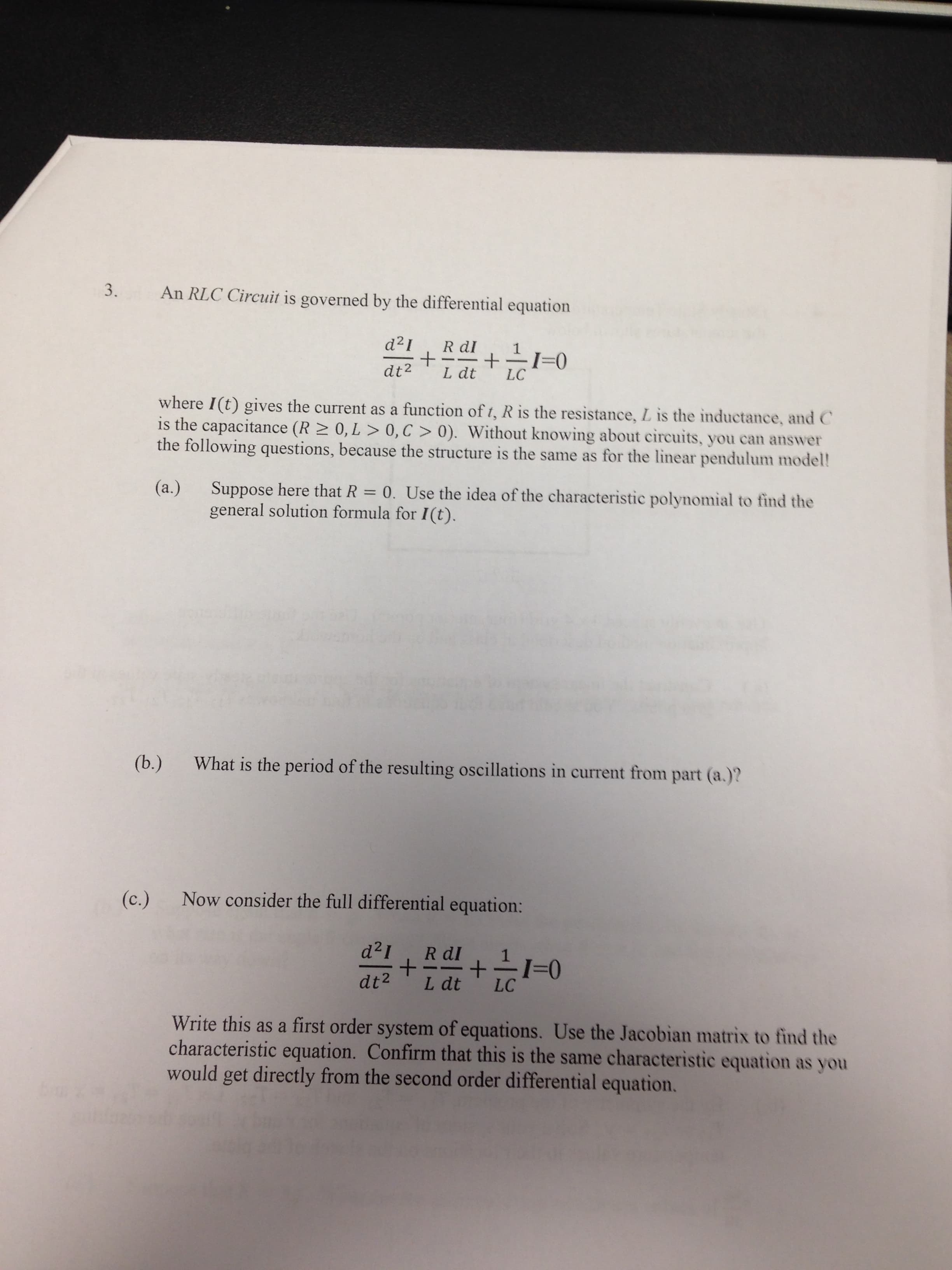3. An RLC Circuit is governed by the differential equation d21 R dl +I-0 dt2 L dt LC where I(t) gives the current as a function of t, R is the resistance, L is the inductance, and C is the capacitance (R2 0, L > 0, C> 0). Without knowing about circuits, you can answer the following questions, because the structure is the same as for the linear pendulum model! (a.) Suppose here that R 0. Use the idea of the characteristic polynomial to find the general solution formula for I(t). What is the period of the resulting oscillations in current from part (a.)? (b.) Now consider the full differential equation: (c.) d21 R dl + dt2 +I-0 L dt LC Write this as a first order system of equations. Use the Jacobian matrix to find the characteristic equation. Confirm that this is the same characteristic equation as you would get directly from the second order differential equation.
3. An RLC Circuit is governed by the differential equation d21 R dl +I-0 dt2 L dt LC where I(t) gives the current as a function of t, R is the resistance, L is the inductance, and C is the capacitance (R2 0, L > 0, C> 0). Without knowing about circuits, you can answer the following questions, because the structure is the same as for the linear pendulum model! (a.) Suppose here that R 0. Use the idea of the characteristic polynomial to find the general solution formula for I(t). What is the period of the resulting oscillations in current from part (a.)? (b.) Now consider the full differential equation: (c.) d21 R dl + dt2 +I-0 L dt LC Write this as a first order system of equations. Use the Jacobian matrix to find the characteristic equation. Confirm that this is the same characteristic equation as you would get directly from the second order differential equation.
Related questions
Question

Transcribed Image Text:3.
An RLC Circuit is governed by the differential equation
d21
R dl
+I-0
dt2
L dt
LC
where I(t) gives the current as a function of t, R is the resistance, L is the inductance, and C
is the capacitance (R2 0, L > 0, C> 0). Without knowing about circuits, you can answer
the following questions, because the structure is the same as for the linear pendulum model!
(a.)
Suppose here that R 0. Use the idea of the characteristic polynomial to find the
general solution formula for I(t).
What is the period of the resulting oscillations in current from part (a.)?
(b.)
Now consider the full differential equation:
(c.)
d21
R dl
+
dt2
+I-0
L dt
LC
Write this as a first order system of equations. Use the Jacobian matrix to find the
characteristic equation. Confirm that this is the same characteristic equation as you
would get directly from the second order differential equation.
Expert Solution
Trending now
This is a popular solution!
Step by step
Solved in 10 steps with 9 images
